How to Spend a Weekend in Bilbao
Located in the Basque country along the northern Spanish coast, Bilbao has become popular with tourists for its art and architecture, cuisine, and history. Though still sometimes overshadowed by more well-known Spanish destinations like Barcelona or the province of Andalusia, Bilbao (pronounced “beel-BAH-oh”) has recently undergone a rapid transformation from industrial backwater to top tourist destination.
Armed with this basic knowledge, I arrived in the Abando train station, purchased the requisite Barik (a card used to pay for public transportation), and began my several-day visit to the Basque capital. There’s certainly more to see in the Bilbao area than I did during my several days there. But between the impressive art scene, exploring Bilbao itself, and a visit to the hermitage at San Juan Gaztelugatxe north of the city, I found Bilbao to be a fantastic place visit.
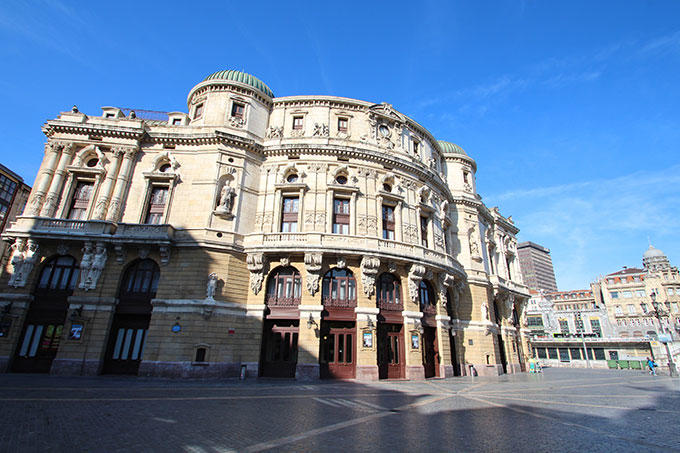
Bilbao architecture
Bilbao architecture
Art
Bilbao’s modernisation was heralded in the mid-90’s by the opening of the Bilbao Guggenheim Museum. Designed by the renowned architect Frank Gehry, the building is among the most famous structures in the world, so much so that some have even referred to the revitalisation of cities through a specific recognisable architectural project as “the Bilbao Effect”.
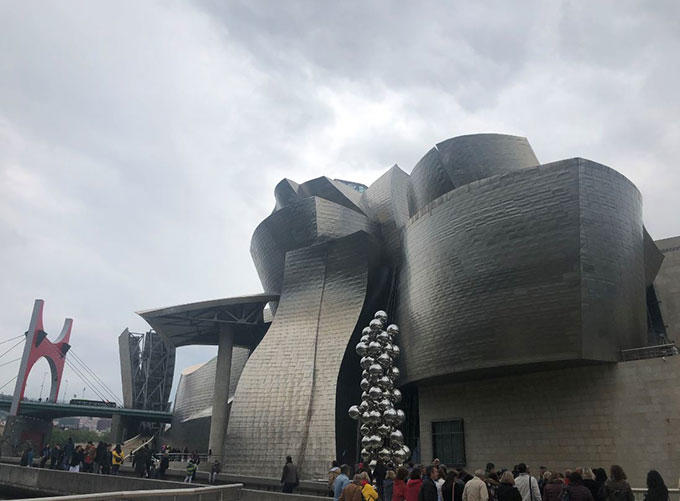
Guggenheim Bilbao - Image: Oliver Kendall
Guggenheim Bilbao
Image: Oliver KendallFans of art will find more to appreciate than simply the magnificent building – the museum itself holds a spectacular array of modern art that can easily consume hours, or even a full day for those less vulnerable to museum-fatigue. A number of sculptures also surround the building, running the gamut from a large, ‘War of the Worlds-esque’arachnoid structure of twisted metal to a giant puppy made of plants that grow attached to an internal framework.
Although the Guggenheim is clearly the main artistic attraction, the Bilbao Fine Arts Museum also boasts a number of works by renowned artists, and is well worth a visit for those interested in dedicating a large portion of their time in the city to taking in the art scene.
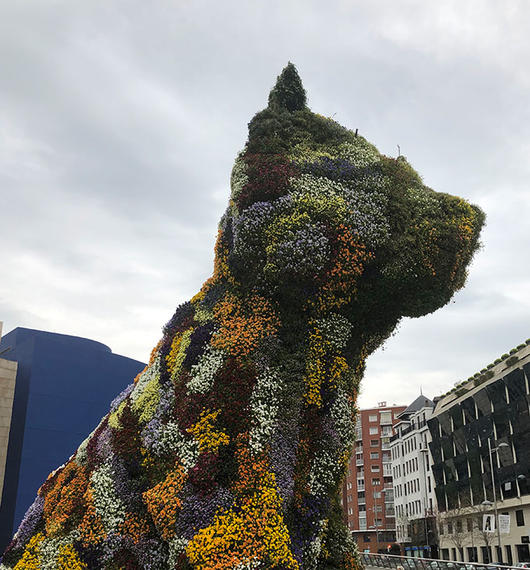
Bilbao Dog Sculpture - Image: Oliver Kendall
Bilbao Dog Sculpture
Image: Oliver KendallCulture, Food & Drink
It’s well worth dedicating at least an afternoon to wandering the narrow streets of Bilbao’s old city, the “Casco Viejo”. The neighbourhood includes the beautiful Bilbao Cathedral, along with a number of other famous churches and old buildings that contrast with the ultra-modern Zubizuri bridge and Guggenheim Museum which so recently put Bilbao on the map. It also includes several public elevators (something I wish I’d realised after my first trek up the steep hill) that connects the neighbourhood to another that sits almost directly above it.
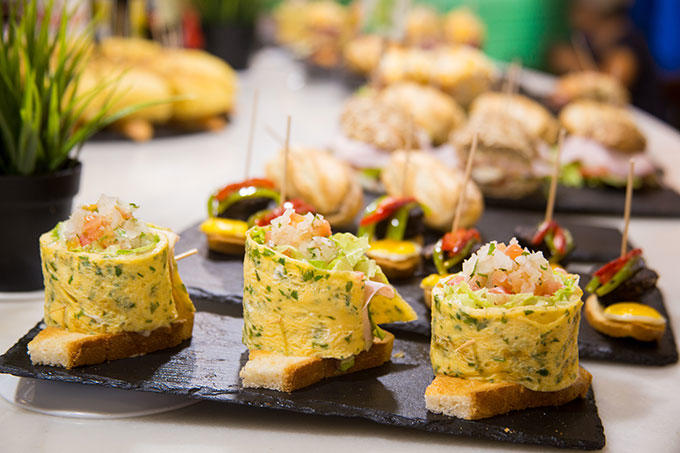
Pintxos
Pintxos
Besides the cathedrals, the Casco Viejo is made up of a number of colourful, yet less stereotypically “Spanish” buildings which line the streets (and surround the stately Plaza Nueva – a must-see during a stroll through the Casco Viejo), and hold everything from high-end boutiques to bars. Virtually all these bars heavily feature pintxos, northern Spain’s take on the famous tapas. Pintxos usually consist of some article of food (which can range from a simple piece of fish or a stuffed pepper to something much more intricate) seated atop a piece of bread, and held in place with a large toothpick. Although an extensive sampling of pintxos is an essential part of any half-decent trip to the Basque country, visitors who have avoided becoming painfully full should also swing by the Mercado de la Ribera, a massive covered market that sits at the edge of the Casco Viejo on the banks of the Nervión river.

San Juan Gaztelugatxe - Image: Oliver Kendall
San Juan Gaztelugatxe
Image: Oliver KendallSan Juan Gaztelugatxe
Though Bilbao itself contains more than enough for a weekend’s worth of exploration, one of the most incredible sites to see near Bilbao is located outside the city itself. Nearly a thousand years ago, a small church was built on a tiny islet a stone’s throw off the Spanish coast north of Bilbao. Game of Thrones fans will recognise it as the site of Daenerys Targaryen’s Dragonstone fortress, and, indeed, the number of tourists making their way to this site has vastly increased since its appearance in season seven. I myself fully admit to having heard of the islet because of its connection to the show – but San Juan Gaztelugatxe is well worth a visit for both Thronies and non-viewers alike, even without Daenerys’s massive CGI castle. If timed correctly (the buses don’t run all that frequently, so some calculation is required), the trip should last about 45 minutes and consists of taking the A3518 bus from Plaza Moyua to the town of Bakio, and then the 3524 to Gaztelugatxe.
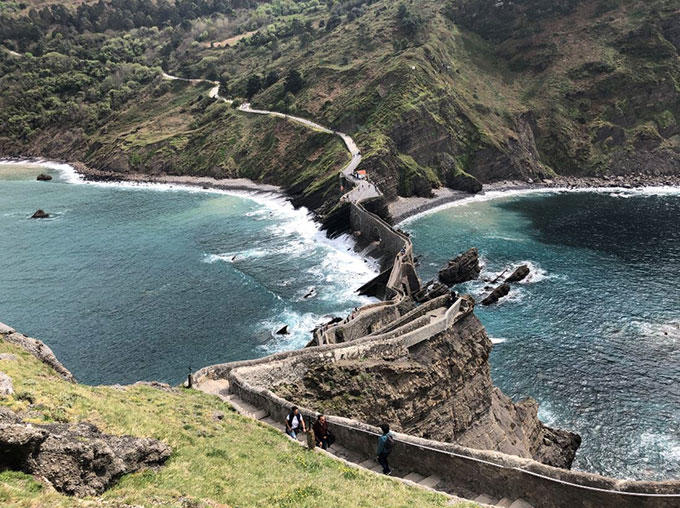
San Juan Gaztelugatxe - Image: Oliver Kendall
San Juan Gaztelugatxe
Image: Oliver KendallBeyond the parking lot, a winding trail leads past a small restaurant down a fairly steep hill. After rounding a corner, visitors are greeted by the rocky islet and magnificent stone path leading to it, which crosses the ocean and zig-zags its way to the small church at the top. What comes next is a decent hike, as those who wish to make it to the top must first descend a hill on the mainland before climbing the 241 steps in order to complete the tradition of ringing the church bell three times. On the upside, this sweaty trek definitely justifies the next round of Pintxos.
Whether you go to take in the beauty of the islet with its jagged outcroppings and natural arches that jut out of the sea, for the history of the hermitage, or to grab a selfie at the site of one of Jon and Daenerys’s first big meetings, San Juan Gaztelugatxe is worth the trip.





